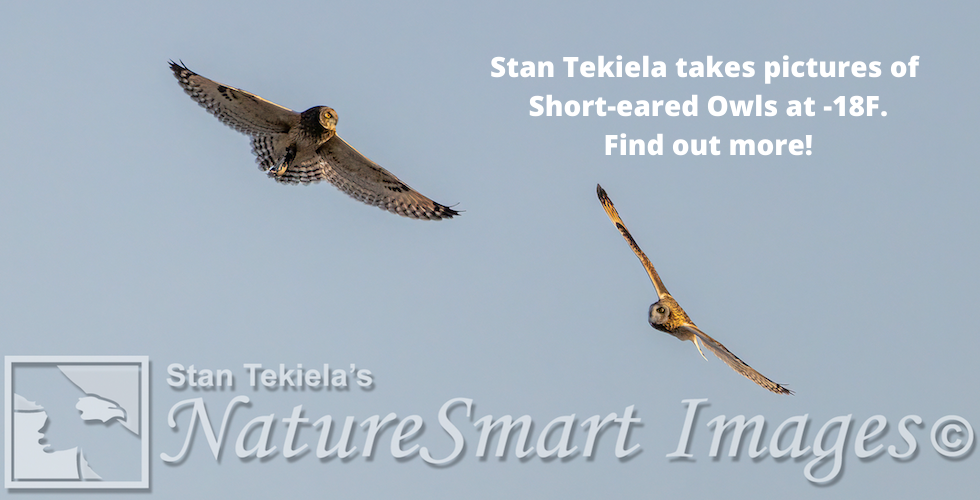
Photographing Short-eared Owls at -18F is No Easy Task
Photographer and wildlife expert Stan Tekiela braved -18F weather to get shots of Short-eared Owls. He shares with us his trials and tribulations on this very cold outing.
I am no stranger to winter weather. After all, I do live in the frozen northland. So I really didn’t think much about it when I went out the other day to photograph some owls. I had in mind the shot I wanted and was determined to get out and try to make it happen. The subject was Short-eared Owls (Asio flammeus), and I was hoping to get just one clean and clear image of this bird in flight—perhaps with its head turned towards me so I could see both eyes.
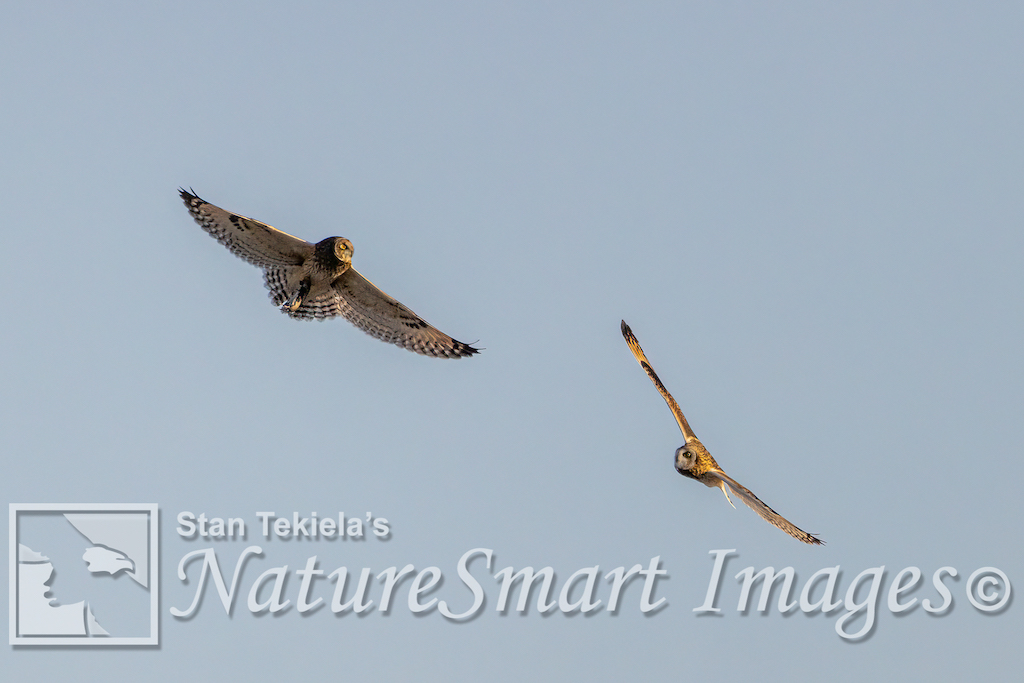
Driving down the road on my mini adventure to find and photograph these owls, I checked the outside air temperature by looking on my dashboard: It read -18 F. Normally that kind of temperature doesn’t bother me, but what I didn’t take into consideration was the wind, which was over 20 mph and gusting to over 30 mph. Yikes!
I had extra jackets, extra gloves, and a hat in my truck, so off I went. After arriving late in the afternoon about 2 hours before sunset, I set out to find some Short-eared Owls. The Short-eared Owl is a grassland species that is in the genus Asio, which is in the “eared” owl group, although the tufts of feathers they have are barely noticeable, hence their name “short-eared.”
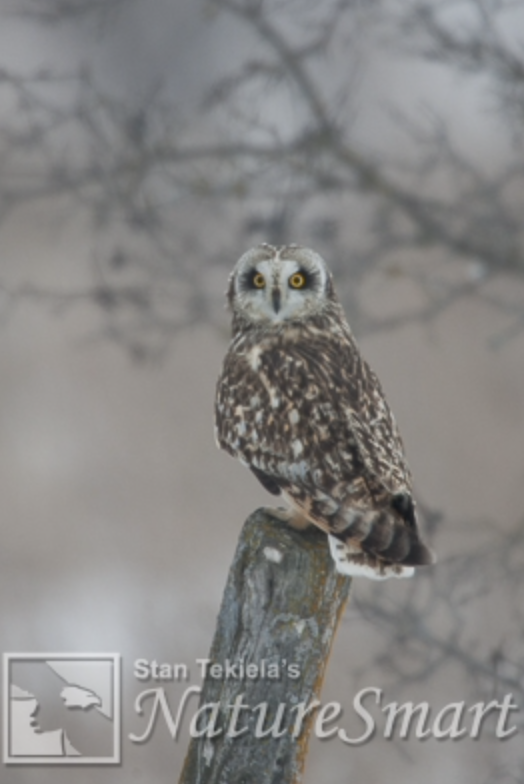
Short-eared Owls are medium-size owls with large, yellow eyes and thick, dark eyeliner around each eye that makes them look like they are wearing too much eye makeup. Very goth-like. Like other owls, they have short necks and puffy heads. One thing that isn’t short on these owls are the wings. They have long, broad wings that, in flight, look like butterfly wings flapping.
Unlike most of our owl species, they are found throughout the world on all continents, except Antarctica and Australia. It has one of the most widespread distributions of any bird, let alone an owl species. In some parts of their range, they migrate south, while in other parts of the range they are nonmigratory.
They often hunt in small groups. Most other owl species hunt solo or perhaps with a mate only. The shorties gather in winter in small flocks of up to 10 or so and hunt for small mammals such as mice and voles in wetlands and grasslands. They fly low over the ground, looking and listening for small mammals. They can stall their flight and hover for short periods of time before dropping down to pounce on their prey.
When one member of the hunting party catches something, the other owls often chase after the one with the prey, which leads to some fun aerial battles. The other owls try to snatch the fresh-caught prey right out of the talons of the one who has the mouse or vole. The one who caught the prey often flies far away to eat without being harassed by the others.
Arriving at the location where I had seen Short-eared Owls before, I stepped out of my truck right into the teeth of a 30-mph wind out of the northwest, plus wind-chills approaching -40 degrees below zero. Immediately, I put on a third jacket and pulled my hat down to cover my ears. Wow, it was cold.
In this kind of weather, the batteries in my cameras don’t hold up well, so within minutes my first camera battery gave up and I was forced to take off my gloves to change the battery. Looking through the view finder of my camera causes my breath, when exhaled, to freeze on the screen that controls the camera. This doesn’t help in any way. Wearing thick winter gloves doesn’t help either, especially when the buttons on the camera are tiny and hard to feel even when you aren’t wearing gloves.
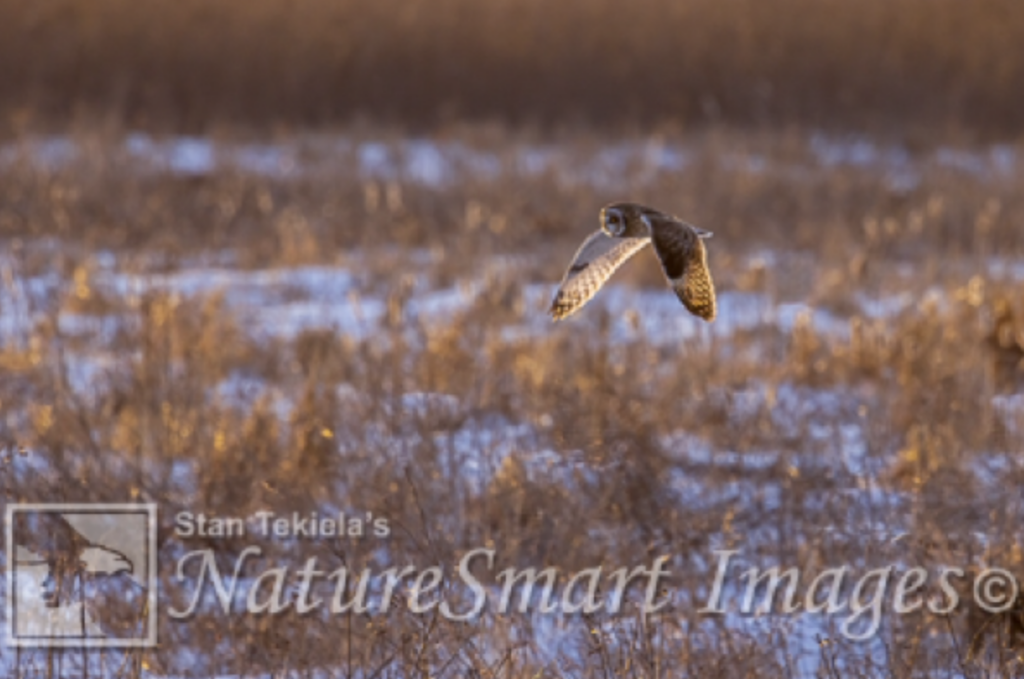
I had one problem after another; soon I couldn’t feel my fingers anymore and my face felt like it was on fire. But I stayed and continued to try to capture some images. Fortunately, right when the cold became unbearable, and the sun was about to set, one of the owls captured a vole near me and was trying to fly up high enough to get away with the prize when a second owl spotted this and came over to see if he could snatch the prey away. The two owls weren’t concentrating on me, so they flew right past me, allowing me to capture a few quick images.
I got back in my truck, started up the engine, and turned on some heat. Driving home, I could slowly start to feel my hands and face again. I didn’t get the exact image I was hoping for, but it will have to do.
About the author: Naturalist, wildlife photographer, and writer Stan Tekiela is the author of more than 175 field guides, nature books, children’s books, wildlife audio CDs, puzzles, and playing cards, presenting many species of birds, mammals, reptiles, amphibians, trees, wildflowers, and cacti in the United States.
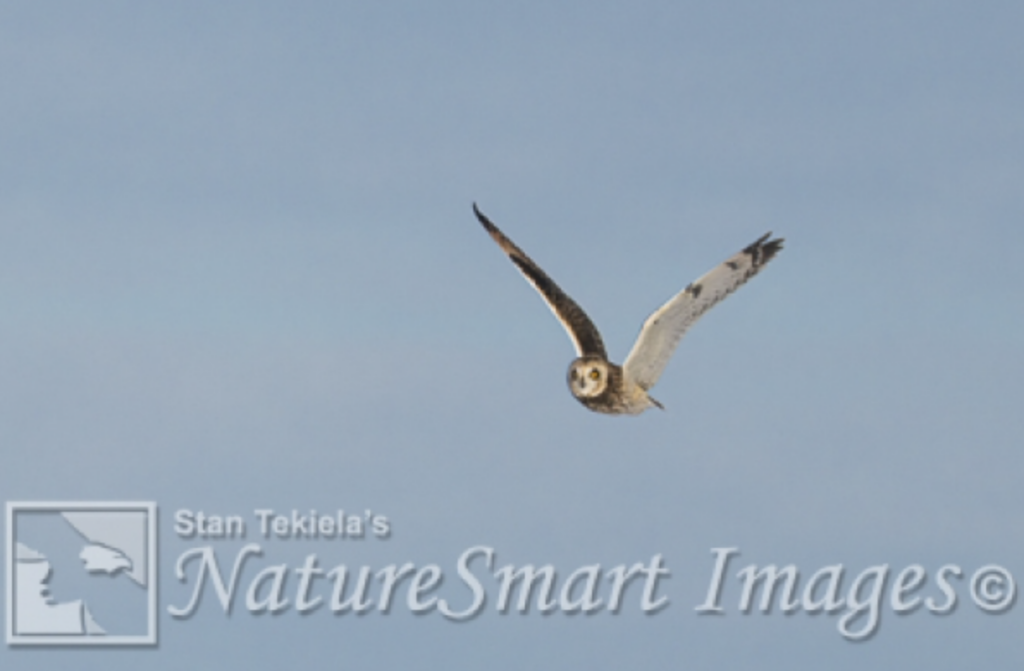
With a Bachelor of Science degree in Natural History from the University of Minnesota and as an active professional naturalist for more than 25 years, Stan studies and photographs wildlife throughout the United States and Canada. He has received various national and regional awards for his books and photographs.
Also a well-known columnist and radio personality, Stan’s syndicated column appears in more than 25 newspapers, and his wildlife programs are broadcast on a number of Midwest radio stations. Stan can be followed on Facebook and Twitter. He can be contacted via www.naturesmart.com.

If you enjoyed Stan’s post, you may enjoy his amazing nature books: Wild Birds, Backyard Birds: Welcomed Guests at our Gardens and Feeders, and Bald Eagles: The Ultimate Raptors.
You can follow Stan on Facebook and Twitter, or contact him via his web page. Stan’s nationally syndicated NatureSmart Column appears in more than 25 cities spanning 5 states (Minnesota, Wisconsin, Michigan, Illinois, and Pennsylvania) and is circulated to more than 750,000 readers.
For more stories about wildlife and nature, sign up for our newsletter now!


